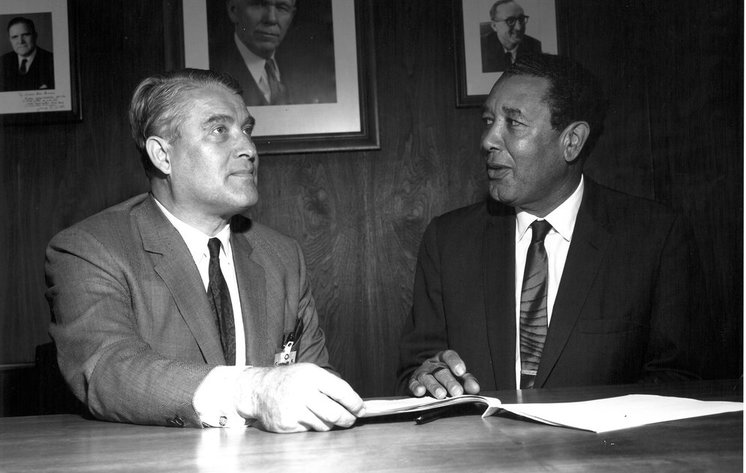- Joined
- Aug 20, 2009
- Messages
- 40,853
- Reaction score
- 21,756
One wonders how much of their advancement in space exploration was thanks to industrial espionage.In space, the US sees a rival in China
6 Jan 2019
AFP/File / STRA Chinese Long March 3B rocket lifting off on December 8, 2018, carrying a rover that landed on the dark side of the Moon
During the Cold War, US eyes were riveted on the Soviet Union's rockets and satellites. But in recent years, it has been China's space programs that have most worried US strategists.
China, whose space effort is run by the People's Liberation Army, today launches more rockets into space than any other country -- 39 last year, compared to 31 by the United States, 20 by Russia and eight by Europe.
On Thursday it landed a space rover on the dark side of the Moon -- a first by any country -- and plans to build an orbiting space station in the coming decade. In the decade after that, it hopes to put a Chinese "taikonaut" on the Moon to make the first moonwalk since 1972.
China now spends more on its civil and military space programs than do Russia and Japan. Although opaque, its 2017 budget was estimated at $8.4 billion by the Organization for Economic Cooperation and Development.
That's far less than the $48 billion the United States spends on its military and civilian space programs, says analyst Phil Smith of consulting firm Bryce Space and Technology. But it is more than double Russia's civilian space budget, which has been slashed to $3 billion.
AFP/File / Laurent EMMANUEL
The mining of minerals or water on the Moon or on asteroids is still a long way off, but American start-ups are already working on it
Overcoming a lag of several decades, China's leaders have very methodically replicated the stages of space development achieved by other great nations: a first satellite in 1970, its first manned space mission in 2003, the first docking of a manned spacecraft to an orbiting module in 2012, and activation of the BeiDou satellite navigation system, China's answer to GPS.
"If they continue on this trajectory, they're going to quickly eclipse Russia in terms of their space technology capabilities," said Todd Harrison, an expert on military space programs at the Center for Strategic and International Studies in Washington.
- Lunar resources -
China currently poses no threat to the commercial satellite launch market, which remains dominated by companies including US-based SpaceX and Europe's Arianespace, and Russia.
Nor has China's progress in space exploration eclipsed that of the US.
China National Space Administration (CNSA) via CNS/AFP/File / China National Space Administration (CNSA) via CNS
China's Jade Rabbit-2 rover drove on the far side of the Moon on January 3, 2018, a mission no other space mission has ever accomplished
NASA's head congratulated China on its Chang'e-4 Moon landing but a 2011 US law bars space cooperation with Beijing, although Congress could lift that restriction.
The real rivalry is in two areas: in the short term, military uses of space; and long-term, the exploitation of resources in space.
The mining of minerals or water on the Moon or on asteroids, notably to produce fuel for rockets, is still a long way off, but American start-ups are already working on it.
Unlike the Cold War, the new conquest of space is unfolding largely in a legal vacuum.
In the 1960s and '70s, Washington and Moscow negotiated several treaties on space, principally to guarantee scientific cooperation and to ban weapons of mass destruction in space.
"The treaties are too vague to be really certain what the legal result is for something like space mining," said Frans von der Dunk, a professor of space law at the University of Nebraska-Lincoln.
- War in space -
Moreover, they have been overtaken by new military technologies: anti-satellite lasers, cyberattacks, electronic jamming, and land-based anti-satellite missiles -- like the one China tested in 2007.
Laws of war govern conflicts on Earth, but there is no equivalent for space. And unanswered questions abound.
AFP / Laurence CHU Chinese lander on the 'dark side of the Moon'
If one satellite collides with another in space, does that constitute an "attack"? What would be a proportional response? Civilian satellites should be protected from reprisals but what about satellites with dual civilian and military uses? How does a nation respond to a cyberattack of uncertain origin?
"It's very hard to distinguish between weapons and non weapons in space," said Jack Beard, a professor in the University of Nebraska's space law program.
"It's unfortunately hard to envision any major armed conflict on Earth not extending into space," he added. "The Chinese have been preparing for whatever eventuality may be in the future, and... they have been experimenting with systems to interfere with our communications, our transmissions from satellites to drones."
Harrison concurs: "The United States has not been keeping pace with the threats against our space systems," and that has left the US vulnerable.
Meanwhile, US dialogue with Beijing is virtually nil, in contrast with Washington's exchanges with Moscow during the Cold War.
"If there's a crisis in space involving China, it's not clear our military knows who to call," said Harrison.
But other observers take a more skeptical view of portraying China as an aggressive adversary of the United States.
Brian Weeden, of the Washington-based Secure World Foundation, said some proponents of the China-as-threat argument wield it as a way to get money for NASA out of a tight-fisted Congress.
They "think that will motivate the US to go off and do the stuff in space that they want to do," he said.
"They see the competition with China as a key to unlocking the political will and money to fund the projects they want to see."
https://www.afp.com/en/news/826/space-us-sees-rival-china-doc-1bz4i23
Anyway the last part makes sense. Here's hoping it drives increased funding to NASA, but it seems more likely to end up going to Space Force (or it's current equivalent, the Air Force et al).
I'm reminded of this:
US military gives NASA two better-than-Hubble telescopes
They are useless to NASA for the sole reason that they can't afford to run them. Get that? They can't even afford to make use of the military's hand-me-downs. Incidentally, this story also shows they don't need a fucking space force because the military already has one, effectively.In a surprise reminder that NASA is not the only US space program – nor likely the best-funded one – the US Department of Defense's National Reconnaissance Office (NRO) is giving the perennially underfunded space administration two better-than-Hubble-class space telescopes, prosaically named Telescope One and Telescope Two.
One would think that the space boffins would be overjoyed at receiving such delectable crumbs dropped from the military's overstocked table – after all, One and Two are not only equipped with the same 7.9-foot mirrors as is the Hubble, they're also fitted with secondary mirrors that improve focusing.
All well and good, to be sure – if NASA could afford to transform the no-longer-needed spy telescopes into scientific instruments, and then get the big ol' beasts into space. The agency isn't exactly flush with cashthese days.
When asked by Stars and Stripes if his spacey staffers were popping champagne corks in celebration of the NRO's unexpected munificence, NASA's science head John Grunsfeld moped, "We never pop champagne here; our budgets are too tight."
It's not just that NASA's budget doesn't include a launch vehicle for one, let alone two, Hubble-sized space telescopes. Another budget-buster is that the NRO telescopes are just that: telescopes, and just telescopes – they don't include any instruments such as cameras or spectrographs.
In addition, NASA has no staff to plan and man any missions for which they might be used. "The hardware is a significant cost item and it's a significant schedule item," Princeton astrophysicist David Spergel told Stars and Stripes. "The thing that takes the longest to build is the telescope." That's the good news. The bad news, he added, is that "A big cost of any mission is always just people."
Still, if NASA can figure out a way to get one of these birds into space, it could accomplish a stunning amount of science. Each of the two telescopes, Spergel said, would have 100 times the field of view of the Hubble – and the Hubble, of course, is nearing the end of its distinguished career, with no more NASA missions scheduled to service it.
"Instead of losing a terrific telescope," Spergel said, "you now have two telescopes even better to replace it with."
That is, of course, if NASA can afford to retrofit them and get them up into space – an Herculean task, what with the James Webb space telescope and its cost overruns tearing hefty chunks out of the space administration's beleaguered budget.
Perhaps the cash-flush US military could dig into its coffers and pay child support for the two telescopes it just offered up for adoption.











